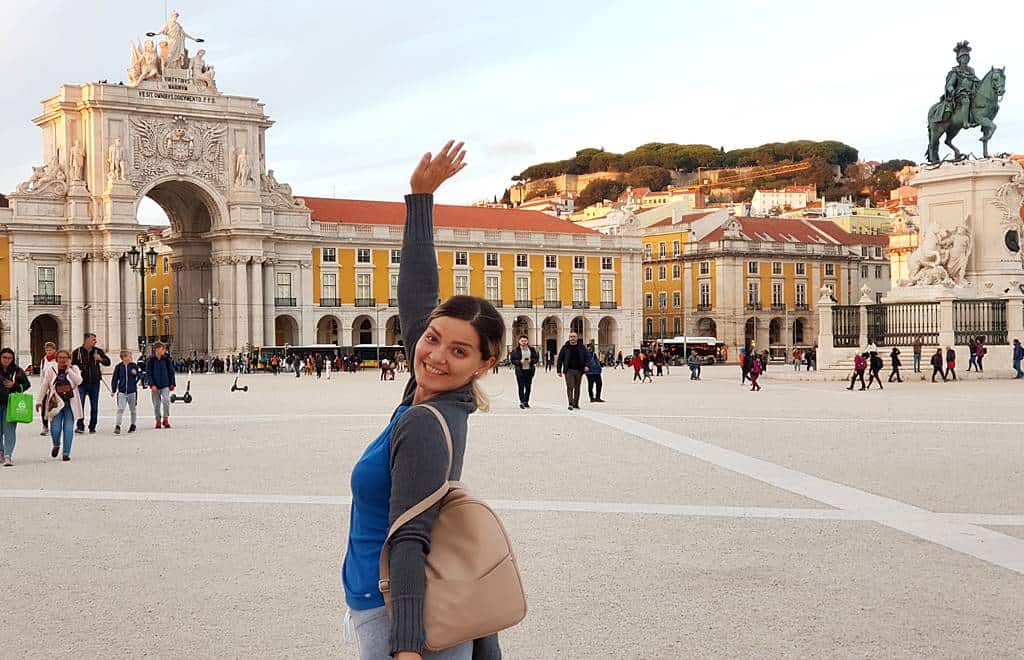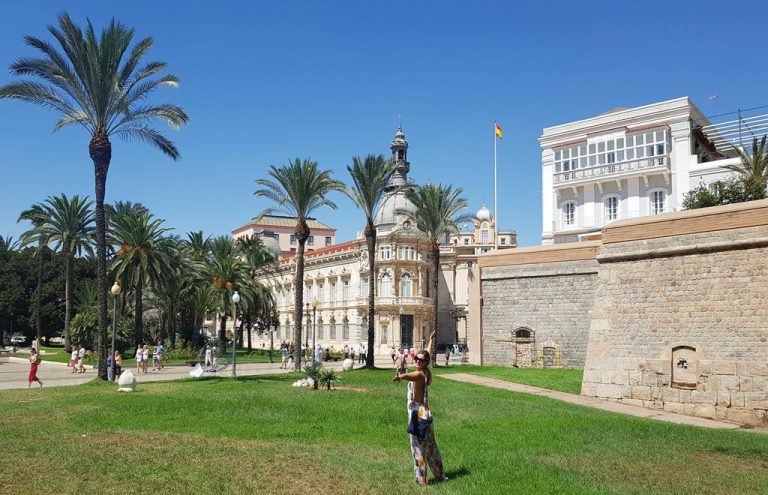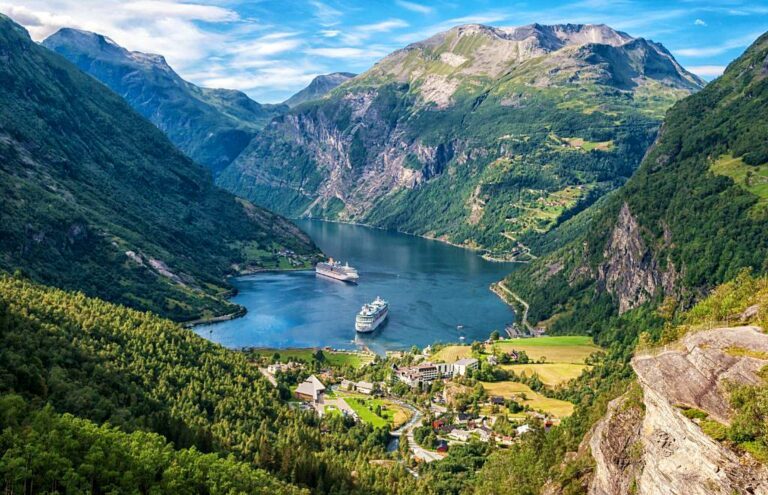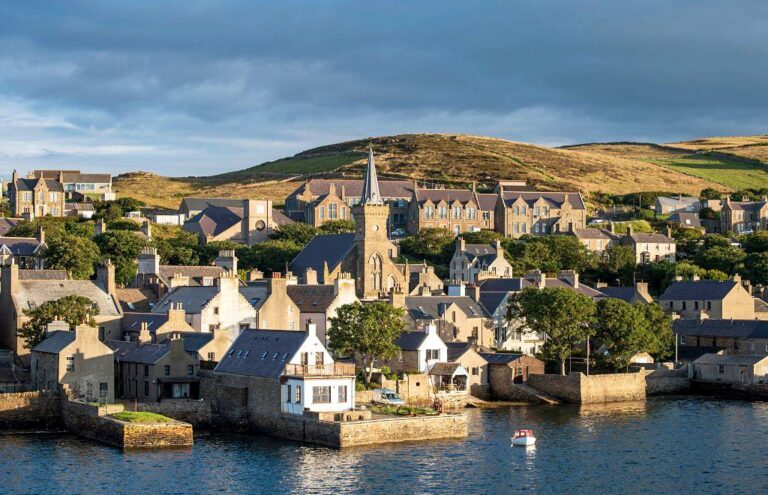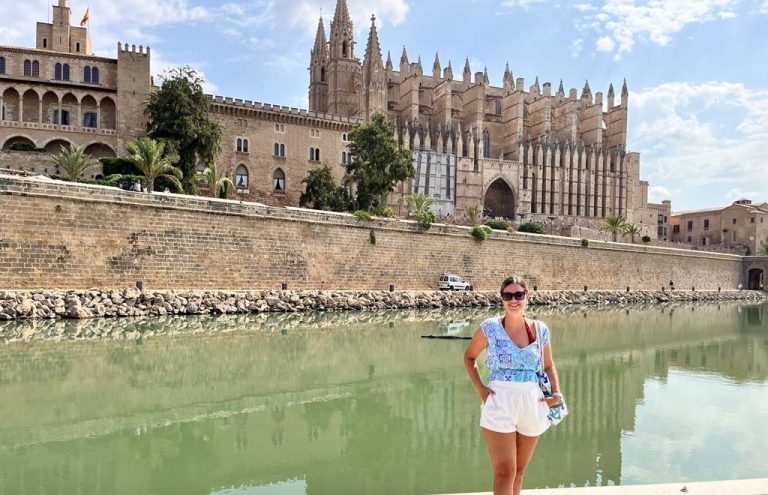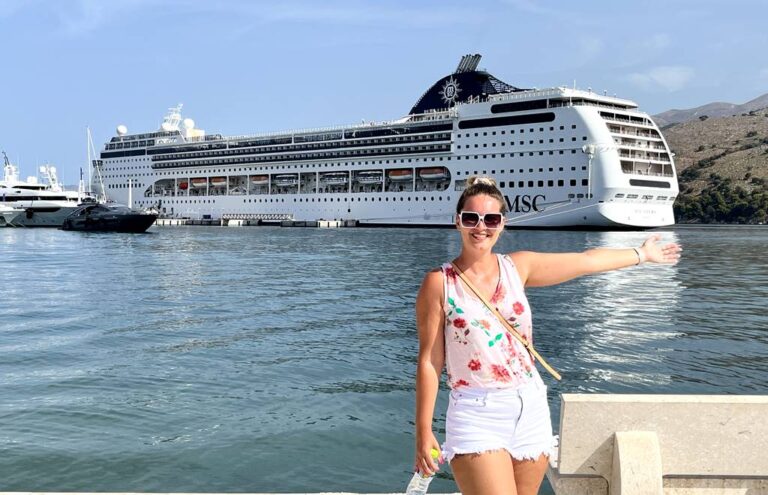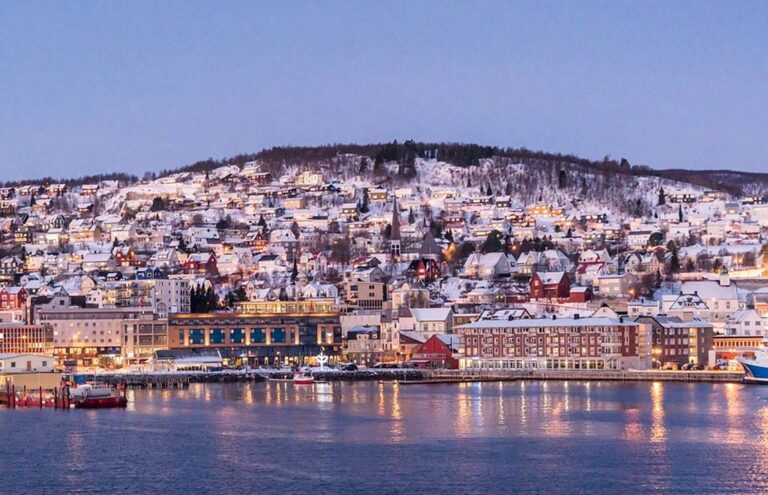Lisbon Cruise Port Guide: Best Things to Do & Day Trips
Some links in this post are affiliate links. If you book through them, I may earn a small commission at no extra cost to you. Thanks for supporting my work!
As an Amazon Associate, I earn from qualifying purchases. Read my full disclosure here.
Lisbon is the capital of Portugal and one of the most fascinating cities in Europe.
It sits on the banks of the Tagus River, close to where the river meets the Atlantic. The city is known for its historic neighborhoods, trams, tiled buildings, fresh seafood, and stunning viewpoints.
I’ve stopped in Lisbon several times on a cruise and always had a great day ashore. I explored different parts of the city, tried local food, picked up a few souvenirs, and even joined a tour to Sintra on one occasion. There’s always something interesting to see or do.
The cruise terminal is located near the city center, so many key sights are within easy reach.
In this guide, I’ve included useful tips about the port, terminals, how to get around, what to see in Lisbon, and the best day trips outside the city.
Lisbon Cruise Port Overview
The port of Lisbon (Porto de Lisboa) is located in the heart of the city, within walking distance of many major sights. It consists of three main cruise terminals:
- Rocha do Conde de Óbidos Cruise Terminal
- New Lisbon Cruise Terminal
- Santa Apolónia Cruise Terminal
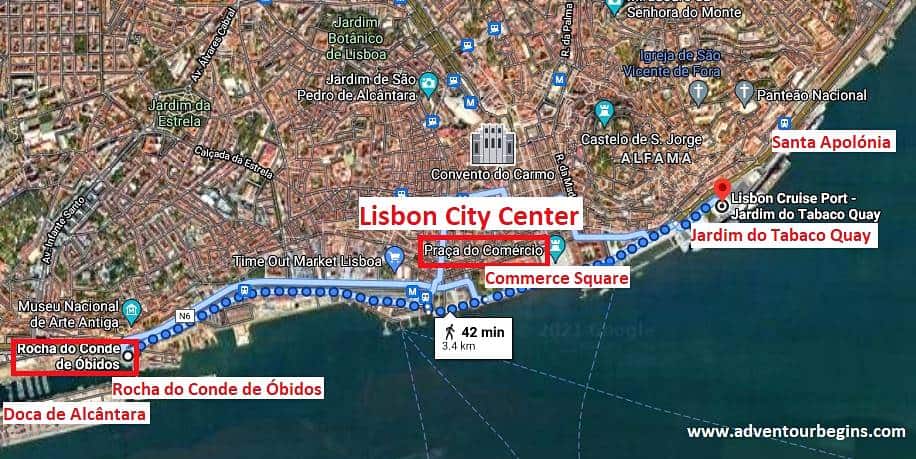
⚓ New Lisbon Cruise Terminal
Most large cruise ships dock at the New Lisbon Cruise Terminal, opened in 2017. It overlooks the historic Alfama district and sits about a 15–20 minute walk from Commerce Square (Praça do Comércio).
This modern terminal includes two quays:
- Jardim do Tabaco Quay – around 950 meters (0.6 miles) from Commerce Square.
- Santa Apolónia Quay – about 1.4 km (0.8 miles) from the city center.
The pier stretches 1,490 meters (0.9 miles) and can handle several ships at once, including the world’s largest cruise vessels.
The terminal building is modern and spacious, with:
- Tourist info center
- Duty-free and souvenir shops
- Cafés
- Luggage storage
- VIP lounges
- Free Wi-Fi
- ATMs and currency exchange
- Wheelchair assistance
- Car rental and tour booths
- Taxi rank, parking, toilets
- A panoramic terrace with river views
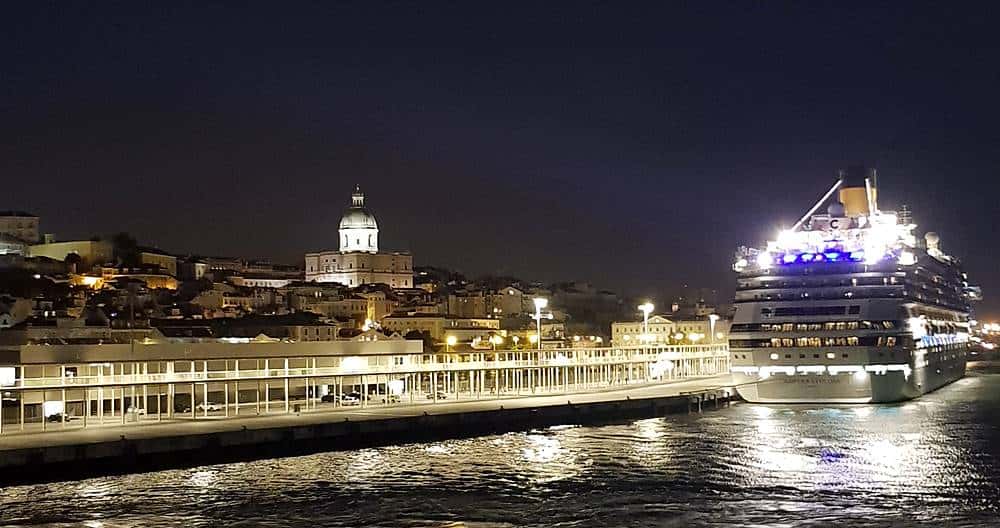
⚓ Santa Apolónia Cruise Terminal
This terminal is integrated with the New Lisbon Cruise Terminal and shares its facilities. It serves as a complementary docking area for larger ships, using the same modern amenities and access points.
⚓ Rocha do Conde de Óbidos Cruise Terminal
This terminal sits closer to the 25 de Abril Bridge, about 3.5 km (2.2 miles) from the New Lisbon Cruise Terminal and 2.5 km (1.5 miles) from Commerce Square.
It features a 483-meter quay with two berths:
- Rocha Conde de Óbidos
- Doca de Alcântara (Doca do Espanhol)
It usually handles smaller cruise ships or acts as overflow when the main terminal is full. Facilities include:
- Taxi access
- Tourist info center
- Public toilets
- Parking
Getting Around Lisbon from the Cruise Port
Lisbon is a large and lively city, but much of it is walkable, especially the historic center.
However, the city is built on hills, and some top sights, like the Belém district, sit a few miles from the cruise terminal. That’s where public transportation can help.
🚋 Public Transport in Lisbon
Lisbon has a well-developed and affordable public transportation network that includes trams, buses, and metro lines. You can check official schedules and maps at carris.pt.
Lisbon Trams
Lisbon’s vintage trams aren’t just practical—they’re one of the city’s most iconic attractions.
- Tram #15 connects Commerce Square to the Belém district. It’s a modern tram and the fastest way to reach Belém. Catch it at Commerce Square, about a 10-minute walk from the New Cruise Terminal.
- Tram #28 is the famous yellow wooden tram. It winds through the historic districts like Bairro Alto, Graça, Mouraria, Alfama, Baixa, Chiado, and Madragoa. You can catch it near Rua da Conceição, close to the Fado Museum and Commerce Square.
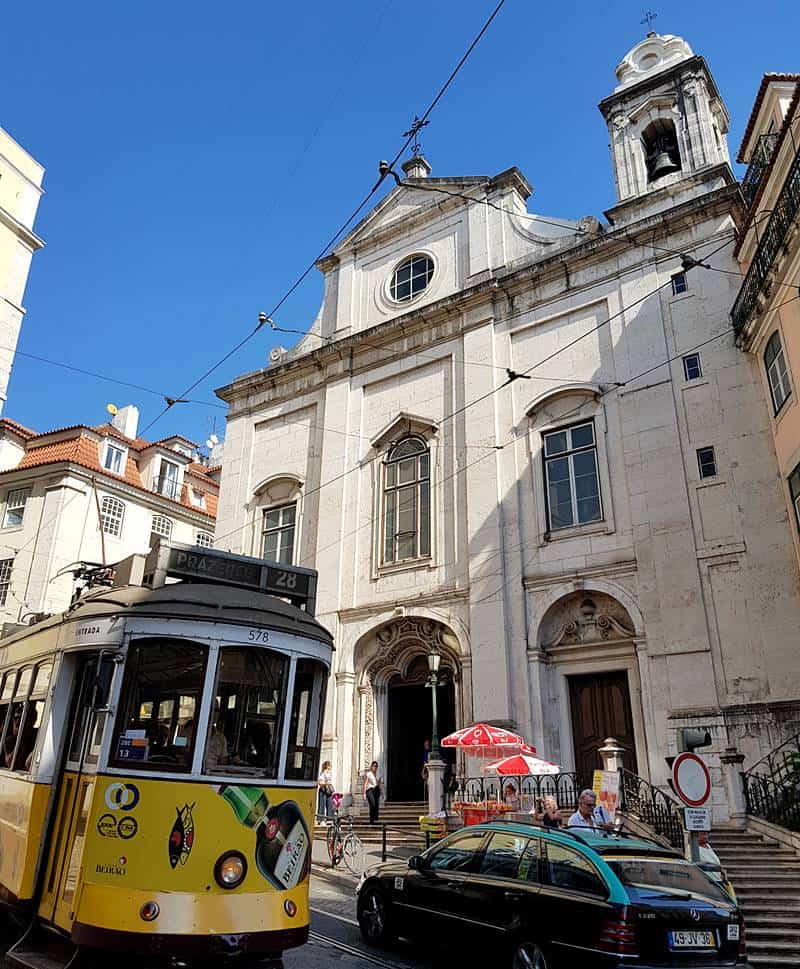
Lisbon Metro
The Lisbon Metro is one of the cleanest in Europe and the fastest way to cross the city. It has four color-coded lines: Blue, Yellow, Green, and Red.
However, it doesn’t serve the Belém area or some historic parts of town.
- Terreiro do Paço is the nearest metro station to the New Cruise Terminal (just across Commerce Square).
- Santa Apolónia metro station is close to the Santa Apolónia Cruise Terminal.
If you want to explore the old town or major landmarks, tram or walking is often a better choice.
Lisbon Buses
Lisbon’s bus network is extensive, and there’s a stop right outside the New Cruise Terminal. You can take the bus to Belém and other areas not served by the metro.
However, buses aren’t ideal for exploring the old town due to narrow, cobbled streets that are inaccessible to larger vehicles. For more info, visit lisbon.net/bus
🚖 Taxis and Rideshare
Taxis in Lisbon are relatively affordable and easy to find. Most are beige, metered, and available outside the cruise terminals. Uber also operates throughout the city and is often slightly cheaper.
🚌 Hop-On Hop-Off Bus Tours
Lisbon has several Hop-On Hop-Off sightseeing bus services. These are a good option if you want a relaxed way to visit the city’s top landmarks.
- The main operator offers Red, Green, and Blue lines that stop at major attractions.
- Tickets are available through Viator and GetYourGuide.
Practical Info for Cruise Passengers
💳 Currency & Payments
Portugal uses the euro (€). ATMs and currency exchange offices are available at the cruise terminals and in the city. Most shops, restaurants, and taxis accept credit cards.
📶 Wi-Fi & Connectivity
Free Wi-Fi is available at the main cruise terminal and in many cafés around Lisbon. Most tourist areas have strong mobile signal.
I personally always use Airalo eSIM cards when I travel — they’re reliable and easy to set up.
👉 Check Airalo eSIM options for Portugal
✈️ Airport Transfers
Lisbon Airport (Humberto Delgado Airport) is about 8 km (5 miles) from the cruise port. Travel time by taxi or Uber is around 20 minutes, depending on traffic.
👉 Book a private transfer from the port or airport
🏨 Where to Stay
If you’re spending a night before or after your cruise, neighborhoods like Baixa, Chiado, or Alfama are ideal for sightseeing.
👉 Find hotels near the Lisbon cruise port
🚗 Tours & Car Rentals
Whether you’re staying in town or heading out on a day trip, Lisbon offers plenty of guided tours and rental options.
👉 Explore Lisbon tours and shore excursions
👉 Compare rental cars in Lisbon
🧳 Want More Cruise Port Tips?
My Lisbon guide is just one of many featured in my Mediterranean Cruise Port Guide eBook — packed with practical tips, maps, and local advice for each stop.
👉 Check out the eBook here
Top Things to Do in Lisbon (Near the Cruise Port)
Lisbon is full of history, flavors, and character — and many of its best sights are within walking distance or a short tram ride from the cruise terminal. Here are the top spots to explore during your stop.
🏘️ Explore Alfama (Lisbon’s Historic Old Town)
If you want to experience the real Lisbon, start with Alfama. It’s the city’s oldest district, full of winding streets, tiled houses, and local life.
The cruise terminal is right next to Alfama, so you can walk straight from the ship and dive in.
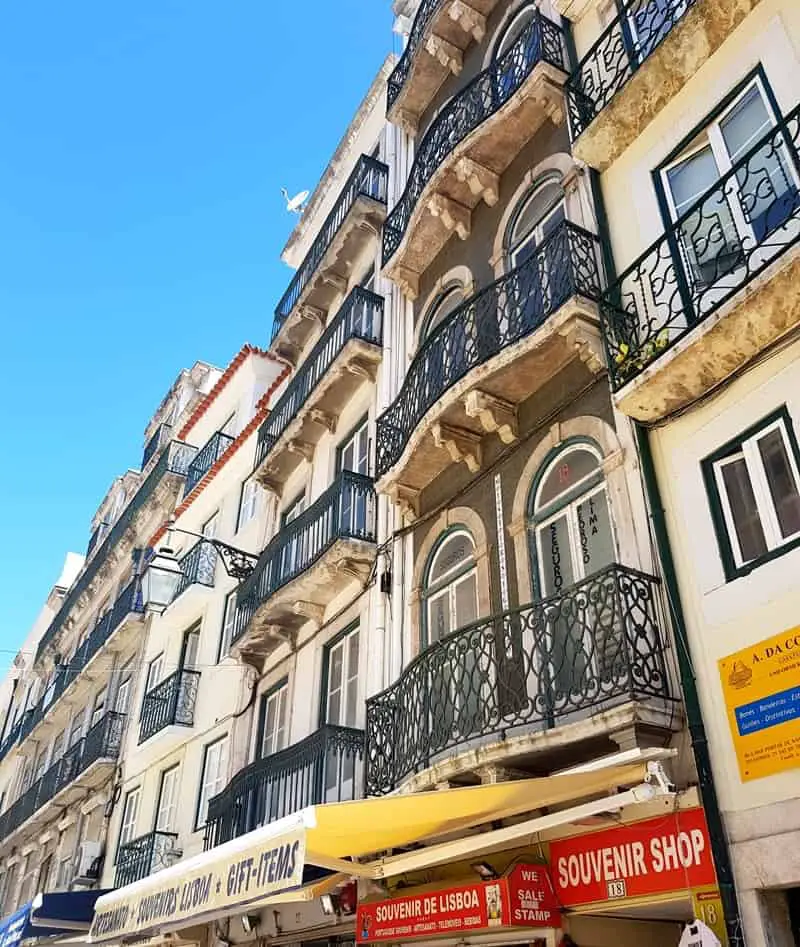
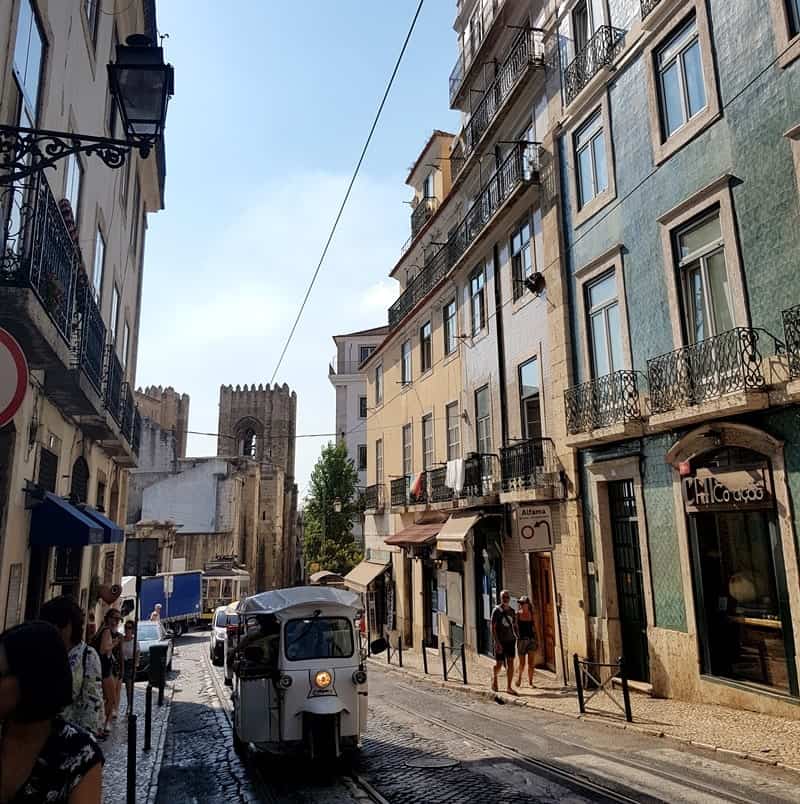
This area has deep roots — once home to fishermen and sailors during the Moorish and the Age of Discovery times. It’s also the birthplace of Fado, Lisbon’s famous melancholic music.
Alfama is all about atmosphere: small cafés serving traditional food, hidden squares, and scenic viewpoints overlooking the Tagus River.
🚶♂️ Prefer a guide? Join a small-group walking tour of Alfama for a deeper look at its history and hidden corners.
Don’t miss:
- Lisbon Cathedral (Sé) – 12th-century Romanesque church
- São Jorge Castle – sits high above the city with panoramic views
- National Pantheon and São Vicente de Fora Monastery
- Fado Museum – a great stop to learn about Portugal’s iconic music
👉 Browse top-rated Alfama tours here
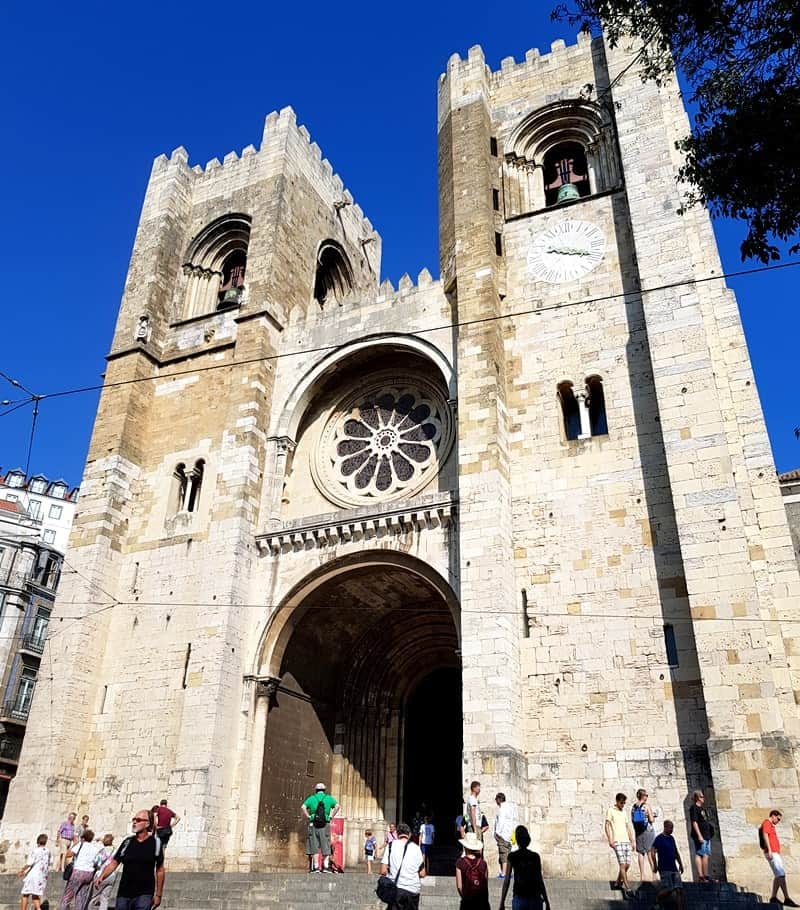
🏰 Visit Belém (Lisbon’s Monument-Filled Riverside District)
Belém is one of Lisbon’s most popular neighborhoods, sitting along the Tagus River about 8 km (5 miles) from the cruise port.
It’s known for leafy parks, colorful tiled buildings, seafood spots, and three of Lisbon’s most iconic landmarks — all within a short walk of each other.
You can reach Belém by tram #15 from Commerce Square, or get there by bus, bike, tuk-tuk, or even a segway for something a bit different.
Belém Tower (Torre de Belém)
Built in the early 1500s to defend the city, this riverside tower is a symbol of Lisbon’s Age of Discovery. Portuguese explorers once set sail from these very docks.
It’s now a UNESCO World Heritage Site, and you can visit inside for a view over the Tagus.
👉 Book skip-the-line entry or a guided tour
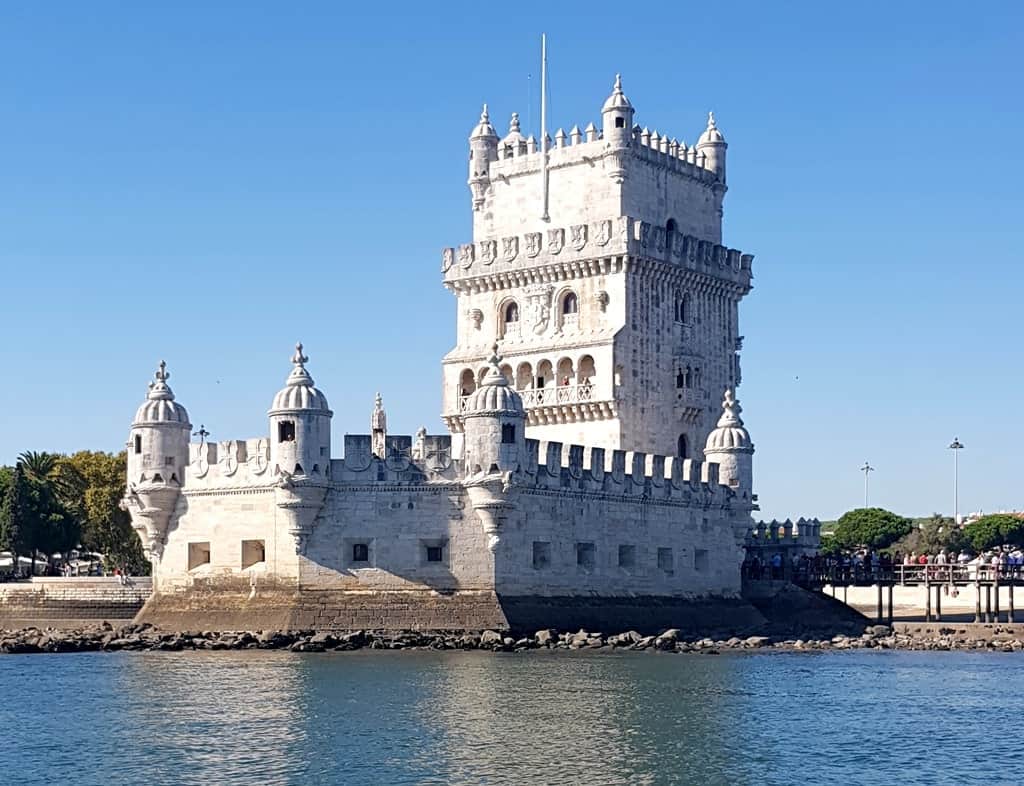
Monument to the Discoveries (Padrão dos Descobrimentos)
Just a 10-minute walk from the tower, this striking 52-meter-tall monument was built in 1940 to honor Portugal’s great explorers.
It commemorates the 500th anniversary of Henry the Navigator’s death, the man who helped lead Portugal’s early maritime expansion and sponsored voyages that led to the discovery of the Azores, Madeira, and Cape Verde.

Jerónimos Monastery (Mosteiro dos Jerónimos)
Another UNESCO site, this ornate monastery is one of Lisbon’s most important buildings.
Inside, you’ll find the Maritime Museum, which showcases Portugal’s seafaring history and is worth a visit while you’re there.
👉 Join a small-group Belém walking tour with tickets included
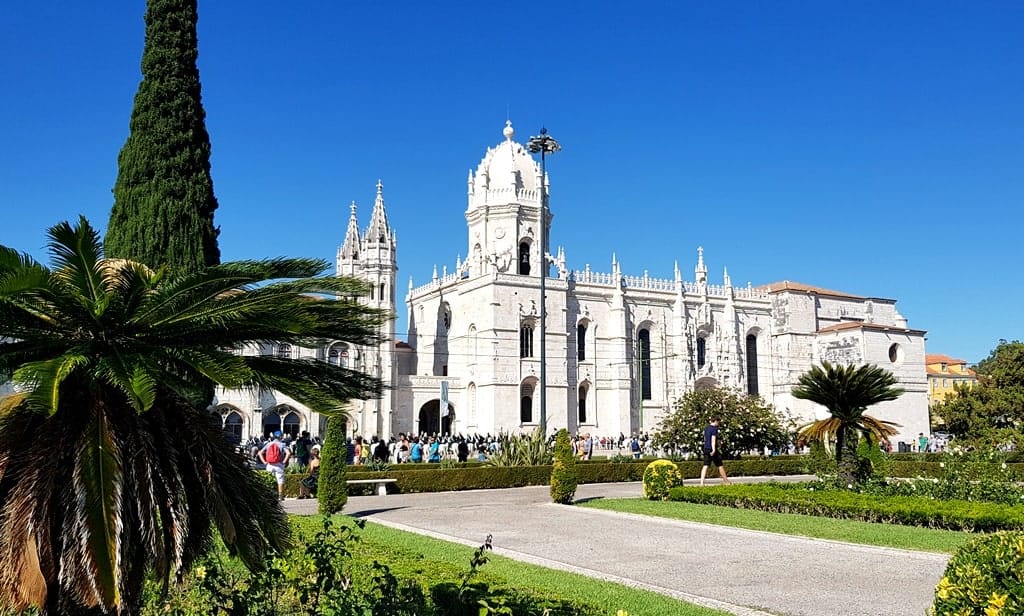
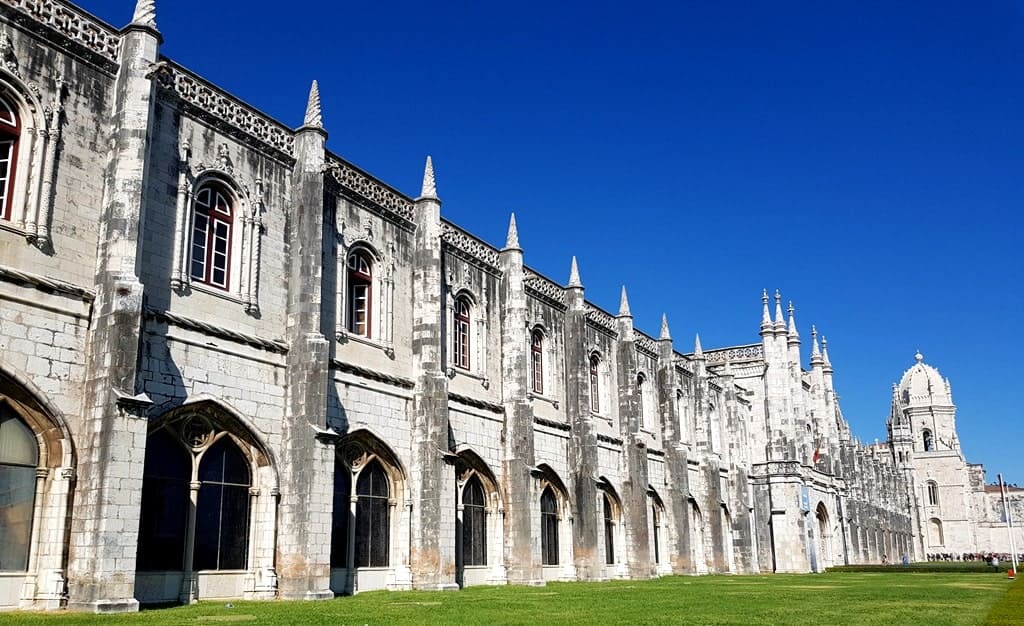
All three landmarks — Belém Tower, Jerónimos Monastery, and the Monument to the Discoveries — are within a short 10–15 minute walk of each other, and are easy to explore on foot.
Belém also has botanical gardens, local markets, and plenty of cafés and restaurants along the river where you can take a break and soak up the view.
If you want to see more in less time, consider exploring by bike, tuk-tuk, or segway — a fun way to cover the area.
👉 Check out Belém tours and experiences
🏙️ Baixa District (Downtown Lisbon)
Baixa is Lisbon’s historic downtown, located right next to Alfama and packed with grand squares, pedestrian streets, and some of the city’s most important landmarks.
Start at Commerce Square (Praça do Comércio), once the city’s main trading hub. It opens to the Tagus River and features a large statue of King Joseph I.
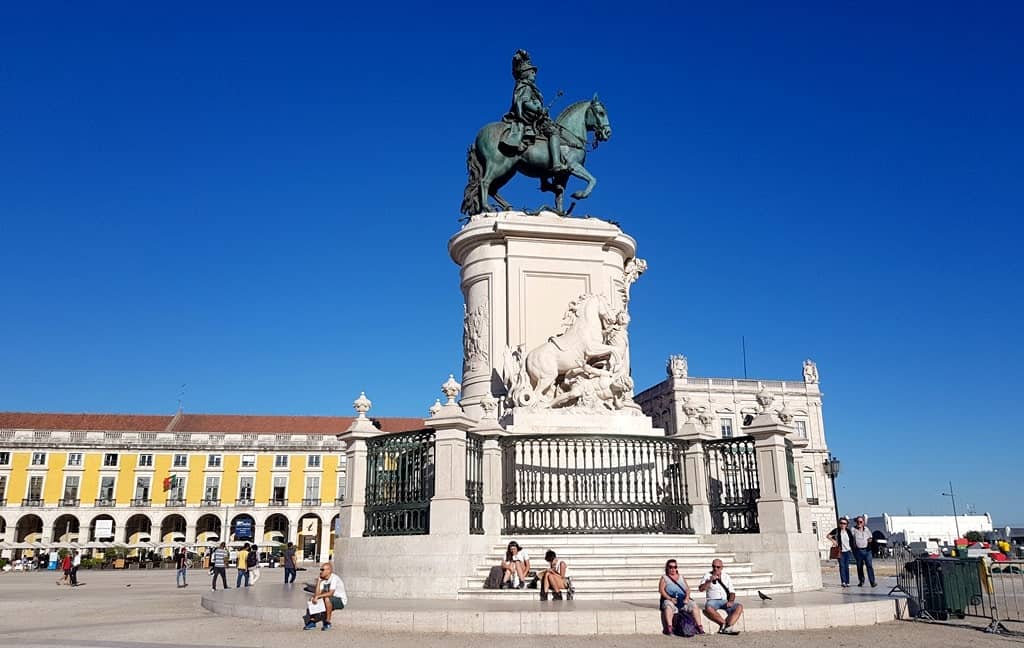
From there, walk through the Rua Augusta Arch, a symbol of Lisbon’s rebirth after the 1755 earthquake, leading to the city’s main shopping street — Rua Augusta, lined with shops, cafés, and pastry spots.
Nearby, you’ll find:
- Rossio Square, home to the Column of Pedro IV and the National Theatre
- Figueira Square, marked by the statue of King John I
- Avenida da Liberdade, a beautiful, tree-lined boulevard with high-end stores
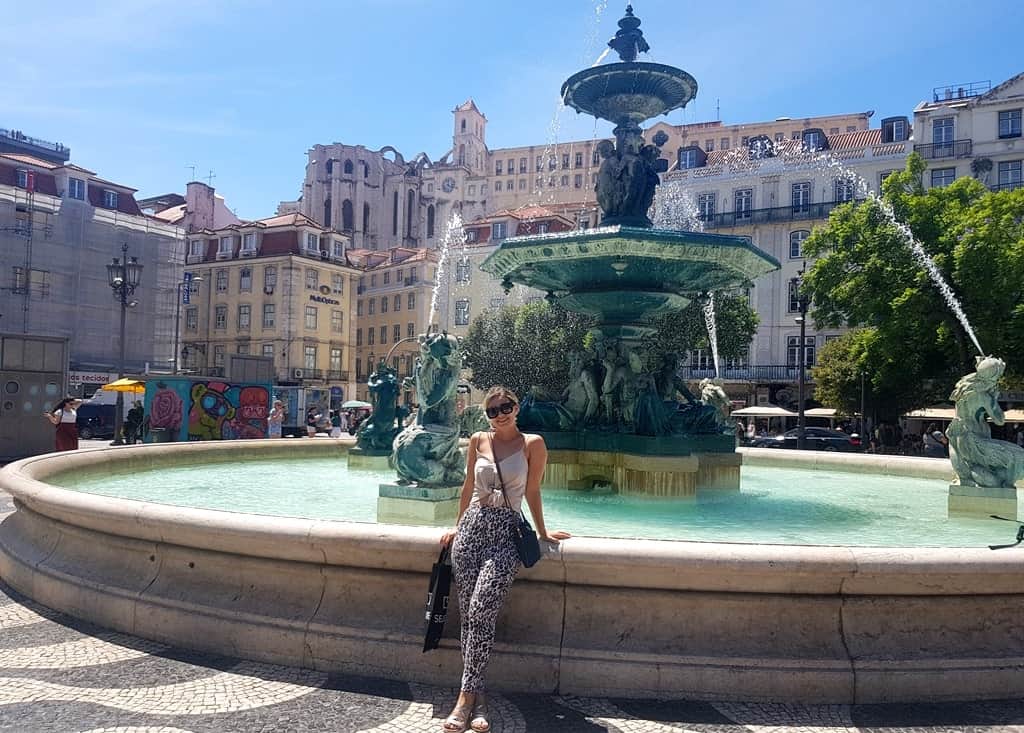
The cruise terminal is just a 10–15 minute walk from Commerce Square, along a scenic riverside promenade.
If you keep walking for about 1.5 hours, you’ll reach Belém and the 25th April Bridge, one of Lisbon’s most iconic sights.
I’ve seen it at every hour of the day, but sunset is by far the most spectacular.
👉 Check out Lisbon walking tours and activities

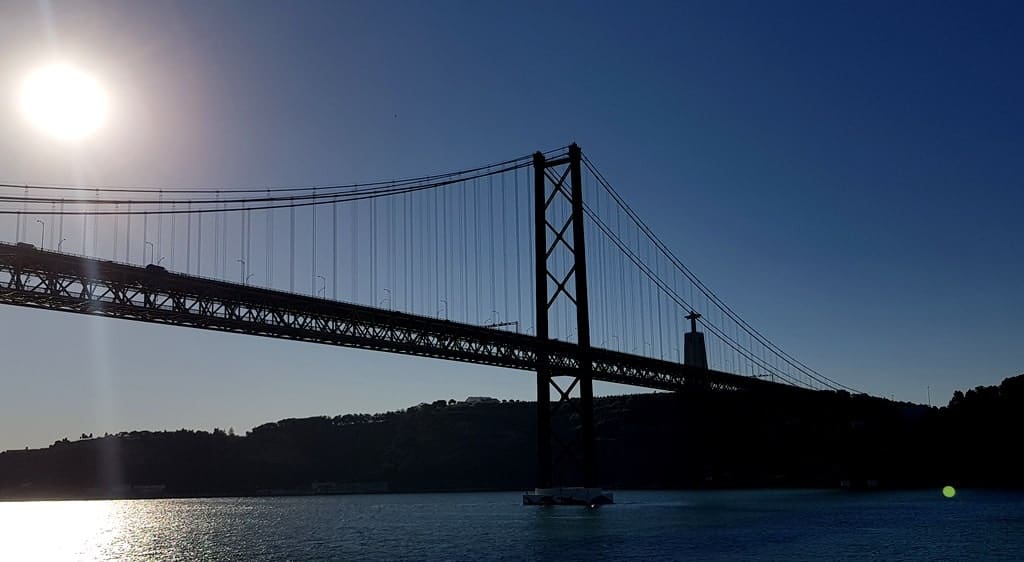
🛺 Explore Lisbon by Tuk-Tuk
Lisbon is full of narrow, steep cobbled streets that buses and cars can’t reach — and walking uphill in the heat isn’t always fun. That’s why tuk-tuks are such a popular (and fun) way to get around.
If you’re arriving by cruise ship, you’ll see plenty of tuk-tuk drivers waiting just outside the terminal, offering all kinds of tours. Most of them are locals who know the city well and will take you to some of the best viewpoints and districts.
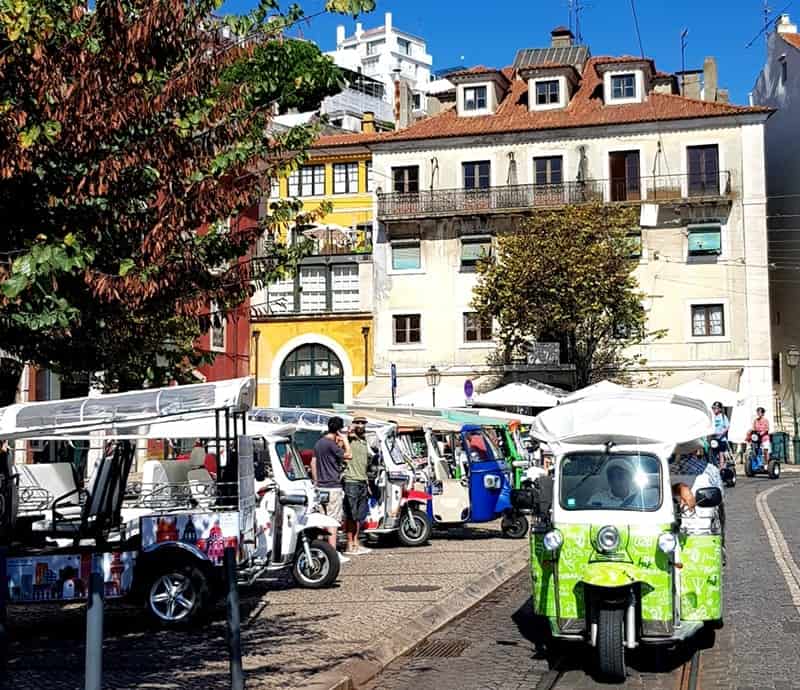
Places often included on tuk-tuk tours:
- Miradouro da Graça – one of the best viewpoints in Lisbon, set on the city’s highest hill
- Miradouro da Senhora do Monte – peaceful and panoramic
- Miradouro de São Pedro de Alcântara – with great views over Baixa and the castle
- Rossio Square – one of Lisbon’s busiest spots, home to the Column of Pedro IV, the National Theatre, and the beautiful Rossio Train Station
- Belém District – many tuk-tuk tours also include Belém with its three must-sees: Belém Tower, Monument to the Discoveries, and Jerónimos Monastery
👉 Check out Lisbon tuk-tuk tours and activities
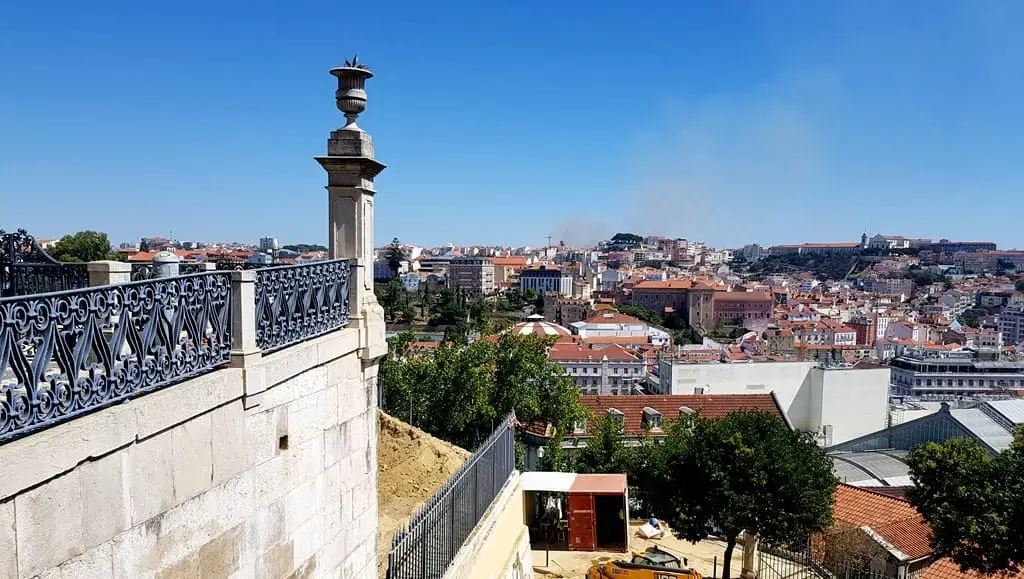
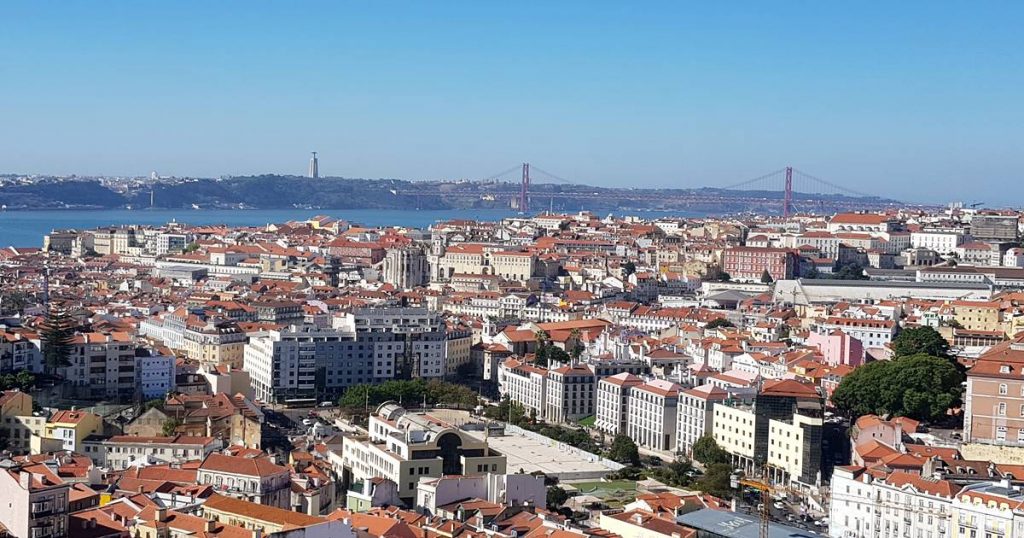
🌊 Hippotrip Amphibious Bus Ride
If you want a fun and different way to see Lisbon, Hippotrip is it. This bright amphibious vehicle takes you on a 2-hour city tour — half on land, half on the water.
You’ll pass landmarks like Commerce Square, Rossio, and Avenida da Liberdade, then head toward Belém. If you’re on a cruise excursion, the tour usually includes a stop to try the famous pastel de nata and sometimes a visit to Jerónimos Monastery.
Then comes the best part — the bus literally drives into the Tagus River. From there, you’ll cruise past the Belém Tower, Monument to the Discoveries, and other riverside sights.
The tour is really popular and spots are limited, so it’s best to book in advance.
👉 Check out Hippotrip tours and tickets
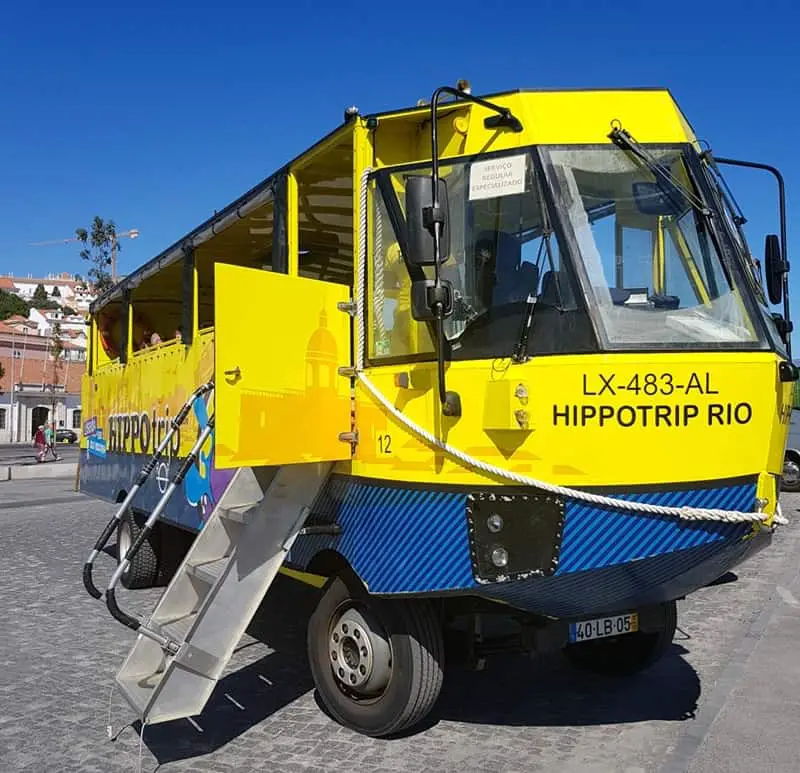
🥮 Taste the Original Pastel de Nata
You can’t leave Lisbon without trying a pastel de nata — a warm, flaky custard tart dusted with cinnamon.
The recipe dates back to the 18th century when monks at Jerónimos Monastery created it using leftover egg yolks.
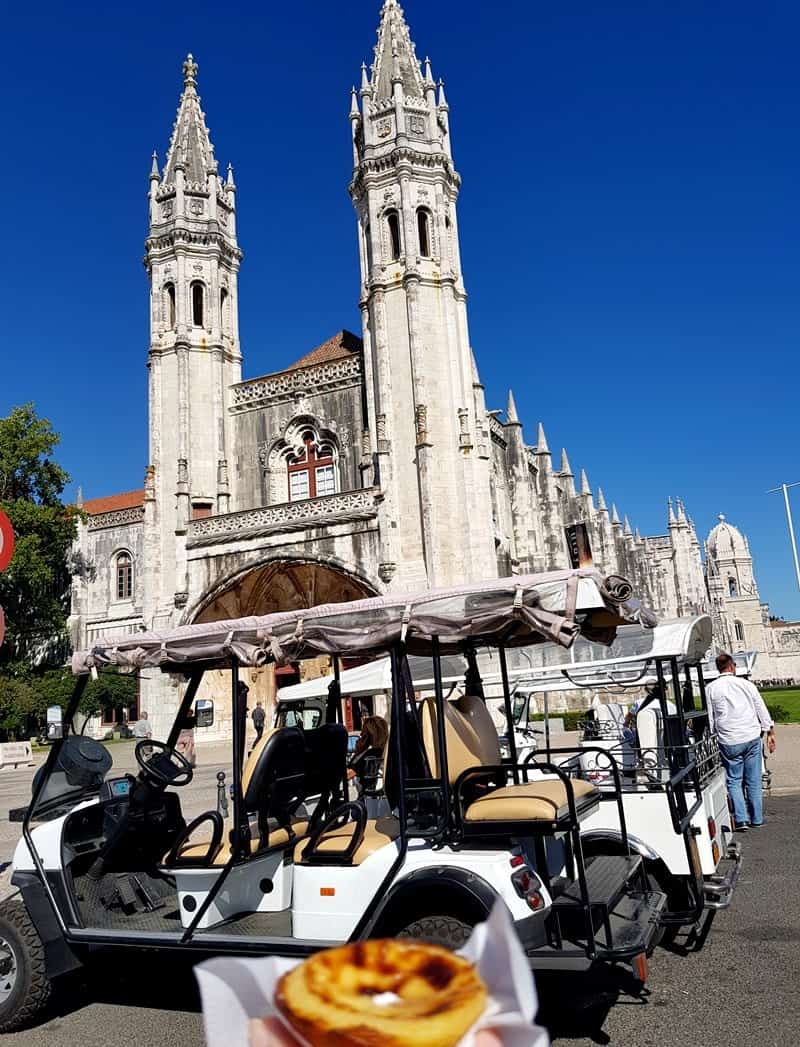
The original recipe has never been written down, and only a few people know it. Today, the only place that makes them the traditional way is Pastéis de Belém, just down the street from the monastery.
I tried them — and yes, they’re as good as everyone says. 😋
👉 Check out Lisbon food tours and tastings

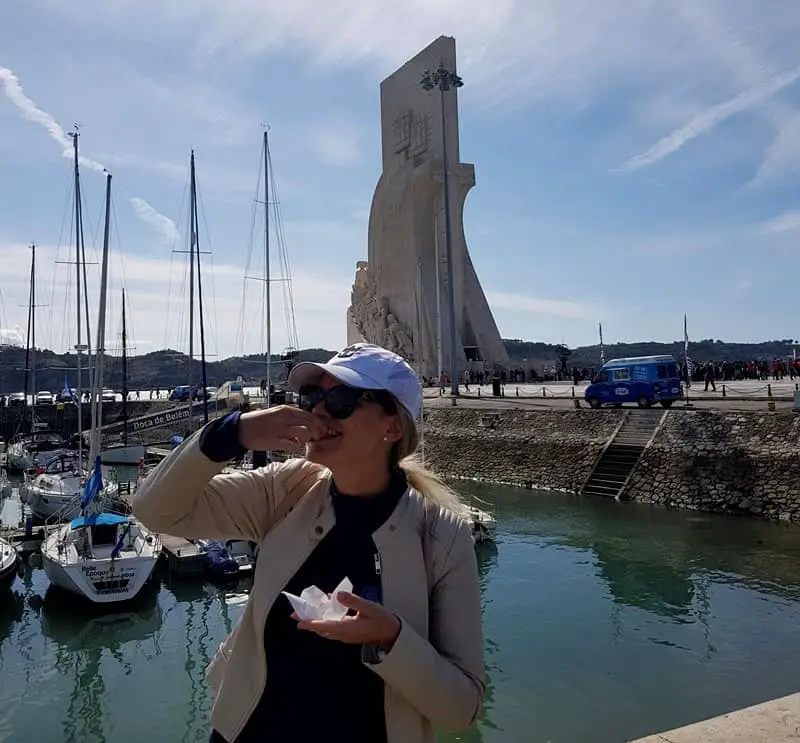
🍷 Lisbon Wine Tasting
Lisbon isn’t just about pastries — it’s also known for its excellent wines. The Estremadura region, just west and north of the city, has a long wine-making tradition that dates back centuries.
Many of these are still family-run vineyards, some over 100 years old, offering wine tastings and cellar tours. I recommend visiting one of these authentic spots — the experience is far more memorable than just grabbing a glass in a bar.
And don’t miss pairing your wine with Bolinhos de bacalhau, delicious codfish cakes that are a classic Portuguese snack.
👉 Explore Lisbon wine-tasting tours and experiences
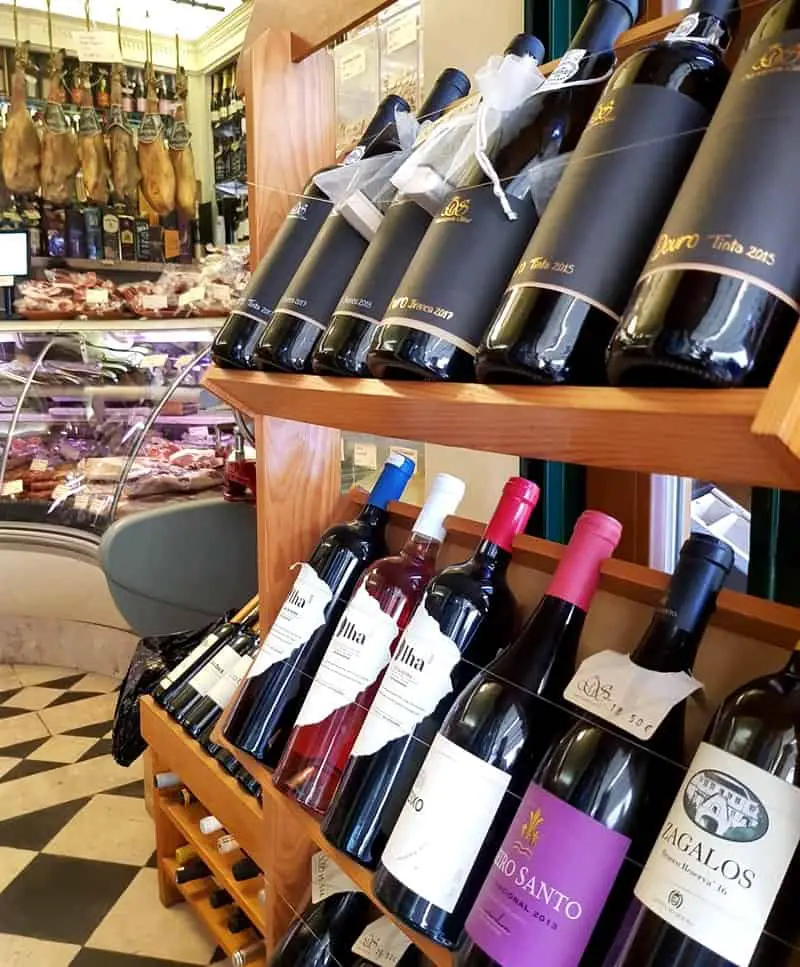
Best Day Trips from Lisbon Cruise Port
🏰 Day Trip to Sintra and Cascais
One of the most popular day trips from Lisbon is a visit to Sintra, a fairytale town about 40 minutes from the cruise port.
It’s known for colorful palaces, hilltop castles, and lush gardens — no wonder it’s a UNESCO World Heritage Site.
Top Sintra highlights include:
- Palácio da Pena – a bright yellow-and-red Romanticist palace
- Palácio Nacional de Sintra – a well-preserved royal residence from the 15th century
- Castle of the Moors – a medieval fortress with sweeping views
- Monserrate Palace – an exotic 19th-century estate surrounded by botanical gardens
- Sintra’s historic center – historic and great for a short walk or coffee break
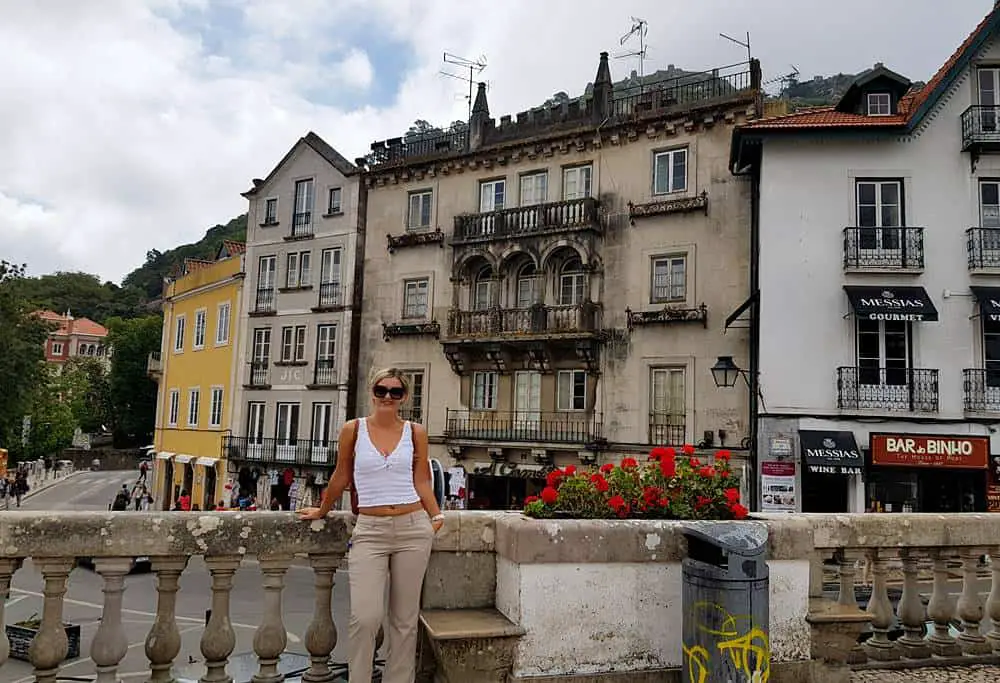
Many cruise excursions combine Sintra with a visit to Cascais, a stylish coastal town about 20 minutes away.
Cascais is famous for its golden beaches, elegant mansions, and relaxed vibe. You’ll find forts, museums, cobbled streets, and plenty of seaside cafés and bars.
Cascais is a perfect surf and yoga retreat for those who prefer to escape and relax from bustling city life.
While you can reach Sintra and Cascais by train or bus, a guided tour is the best option if you’re short on time, especially on a cruise schedule.
👉 Check out Sintra and Cascais tours and activities
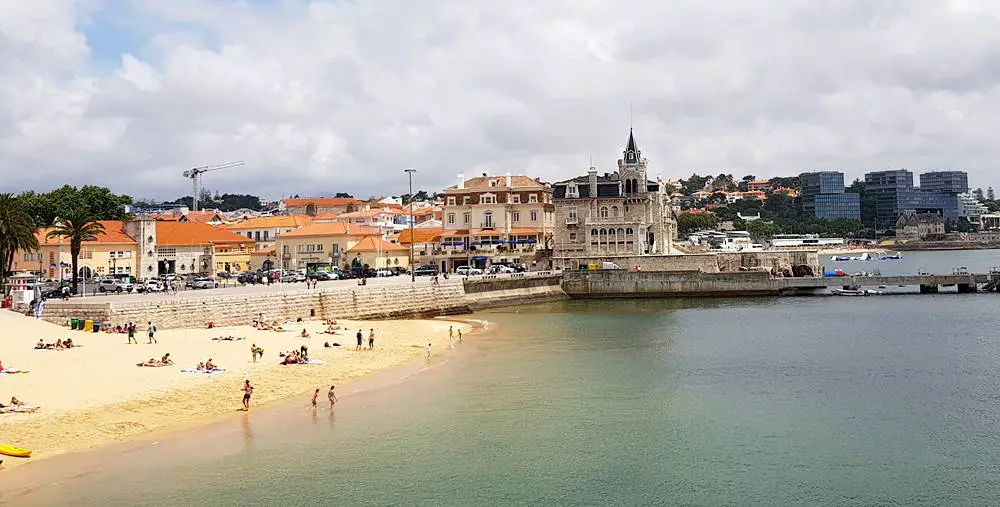
⛪ Day Trip to Fátima
Located about 1.5 hours north of Lisbon, Fátima is one of the most important pilgrimage sites in the Christian world.
It became famous in 1917, when three shepherd children reported visions of the Virgin Mary (Our Lady of Fátima).
Today, millions visit the Sanctuary of Our Lady of Fátima, a large complex of churches and basilicas built on the original apparition site. It’s a moving and peaceful place, even if you’re not religious.
👉 Check out Fátima tours from Lisbon
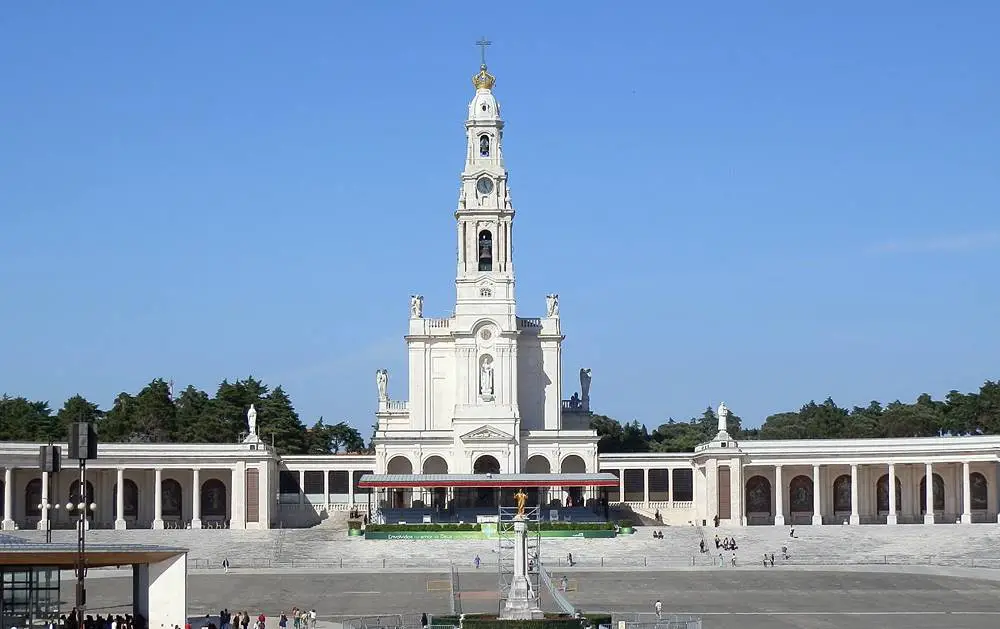
🏰 Day Trip to Óbidos
Just over an hour north of Lisbon, Óbidos is one of the best-preserved medieval towns in Europe. Surrounded by ancient walls and perched on a hilltop, this charming village feels like stepping back in time.
Walk through Porta da Vila, the tiled town gate, and explore Rua Direita, the main street filled with shops, cafés, and galleries. Highlights include:
- Aqueduto de Óbidos – a 16th-century stone aqueduct
- Castelo de Óbidos – a 9th-century hilltop castle
- Igreja de Santa Maria – the main church on Praça de Santa Maria
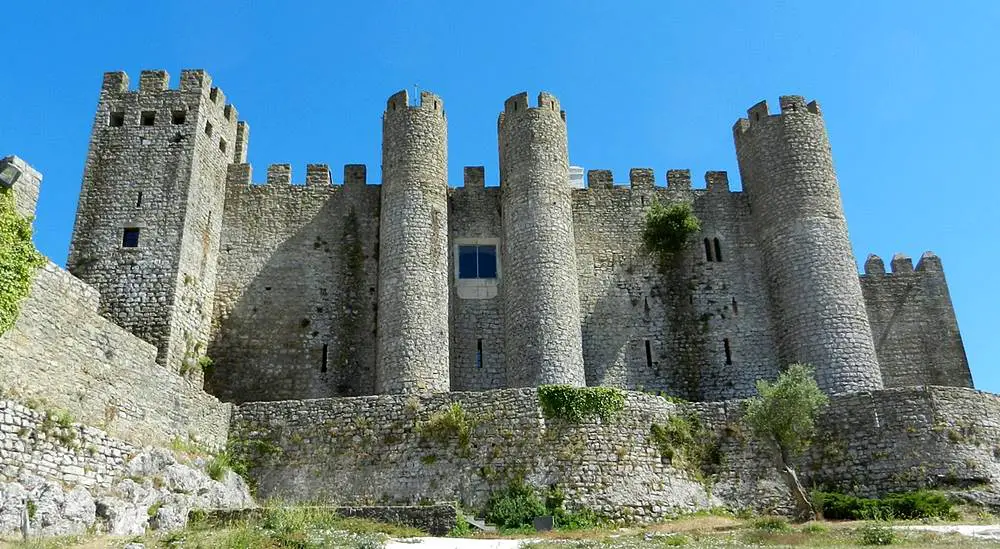
Try the local Ginjinha, a cherry liqueur served in tiny chocolate cups, and browse for traditional Portuguese crafts.
Some tours to Óbidos also include stops in Fátima and Nazaré, a seaside town known for its massive Atlantic waves.
👉 Check out Óbidos tours from Lisbon
Frequently Asked Questions About Lisbon Cruise Port
❓ Can you walk to the city from the cruise port?
Yes, you can. If your ship docks at the New Lisbon Cruise Terminal, you’re only about a 10–15 minute walk from Commerce Square and the city center. You can just follow the waterfront promenade. If you’re docked at Rocha do Conde de Óbidos, it’s a bit farther — around 2.5 km — so you’ll want to take a taxi or shuttle.
❓ Which cruise terminal will my ship use?
Lisbon has three cruise terminals, but most ships dock at the New Lisbon Cruise Terminal or the Santa Apolónia Terminal, both near the historic center. Smaller ships may dock at Rocha Conde de Óbidos, closer to the 25th April Bridge.
❓ What facilities are available at the cruise terminal?
The main terminal is modern and has everything you might need: free Wi-Fi, tourist info, ATMs, currency exchange, souvenir shops, cafés, toilets, VIP lounges, and a large taxi rank just outside. There’s also short-term luggage storage before security, but no long-term lockers.
❓ How far is the airport from the port, and how do I get there?
Lisbon Airport is about 8 km from the cruise port. A taxi or Uber takes around 20 minutes and usually costs between €15–€20. You can also take the metro, but it involves a transfer and isn’t ideal if you have luggage.
❓ What’s the best way to get around from the port?
If you’re heading into the city center, walking is usually the best and easiest option. But if you want to go further out, Lisbon has excellent public transport. The metro is nearby, with stations at Terreiro do Paço and Santa Apolónia. You can also hop on a tram, like the modern #15 to Belém or the iconic #28, which winds through Alfama and other historic neighborhoods. Right outside the terminal, you’ll also find buses, taxis, Uber, and tuk-tuks waiting.
❓ Is the port accessible for guests with mobility issues?
The cruise terminal is accessible and has ramps and elevators. Just keep in mind — the New Lisbon Cruise Terminal is quite large, so it can take 10–15 minutes just to walk from your ship to the terminal exit. Also, some parts of Lisbon like Alfama are hilly with narrow, cobbled streets, which can be tricky if you have mobility issues. If that’s the case, a guided tour or a tuk-tuk ride might be a more comfortable option.
❓ Is Lisbon safe for cruise visitors?
Yes, Lisbon is very safe overall. Just be mindful of pickpockets, especially in crowded areas or on Tram 28. Stick to well-lit streets at night and use official taxis or apps like Uber for peace of mind.
Helpful Resources for Your Lisbon Cruise Stop
🌐 Useful Websites for Planning
- Find Lisbon cruise port on Google Maps
- Lisbon Cruise Ship Schedule
- Lisbon Port Authority
- Lisbon Tourism Office
- Local Weather Forecast
- Carris.pt – Lisbon bus, tram, and metro schedules
- Lisbon.net – General travel info and maps
⚓ Other Cruise Ports Often Included with Lisbon
Lisbon is a common stop on Western Mediterranean and Canary Islands cruise itineraries. If your sailing includes Lisbon, you might also visit:
- Madeira (Funchal) – Lush landscapes, gardens, and coastal cliffs
- Cádiz – Gateway to Seville and Andalusian countryside
- Gibraltar – Ride to the top of the Rock for incredible views
- Canary Islands – Volcanic beauty in Tenerife, Gran Canaria, Lanzarote and La Palma
- Málaga – Perfect for a day trip to Granada and the Alhambra
- Cartagena – Known for its Roman theater and historic port
- Valencia – Home to the UNESCO-listed Old Town and modern City of Arts and Sciences
- Alicante – Beaches, tapas, and the hilltop Santa Bárbara Castle
- Barcelona – Major homeport often used for embarkation or disembarkation
- Vigo – A gateway to Santiago de Compostela and Galician seafood
- A Coruña – Known for the Tower of Hercules and beautiful coastal walks
- Southampton – A major UK cruise port, often used for transatlantic and repositioning sailings
These itineraries often combine Lisbon with both European and transatlantic routes, making it a highlight of many cruise journeys.
You may also like our cruise port guides to the Mediterranean, Caribbean, Northern Europe, USA & Canada, Middle East, Australia & New Zealand
Adventour Begins contains affiliate links. If you make a purchase through these links, we may earn a commission at no additional cost to you. For more details, please see our Disclosure Policy


